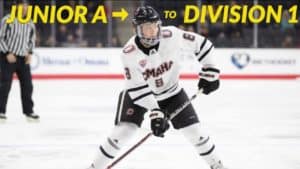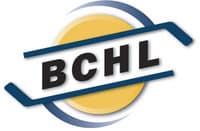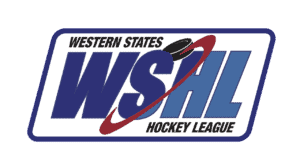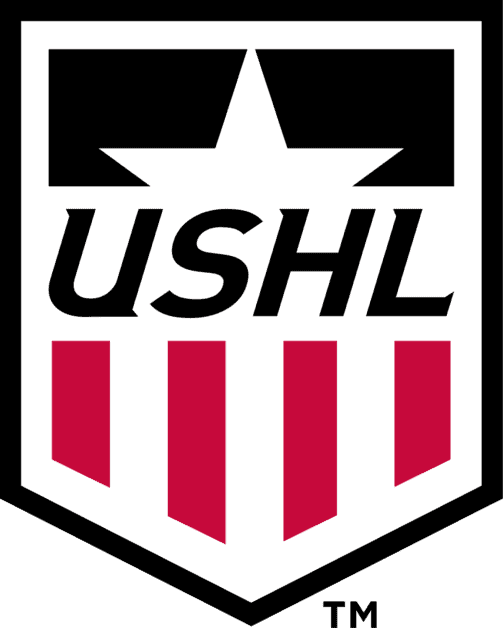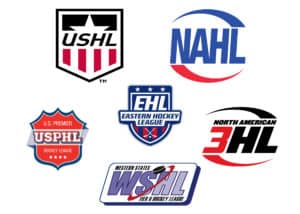This will be the sixth straight year in which USA Hockey (USAH) has not held a true national championship at the Tier III (pay-to-play) level of Junior hockey. During each of the past five years, the lack of this event is bemoaned by many both inside and outside of the Junior hockey landscape. This year will be no different.
The Tier III National Championship
was last truly contested after the 2013-14 season in Simsbury, Conn. The Junior Bruins of the USPHL Premier Division barnstormed their way through this event to capture the national championship with a 4-1 victory over the North Iowa Bulls of the NA3HL.
Prior to 2014, there were years in which various eastern leagues chose not to participate in the national championship, based upon geography and cost. USAH did its best to try to keep the event alive and meaningful, but having Tier III Junior A American and Tier III Junior A National championships in Minnesota and Massachusetts, respectively and simultaneously (like in 2012), and having Tier III National and Tier III American national championships (like in 2015) – in the same facility in Simsbury — didn’t facilitate a true, one-tournament champion.
Why isn’t there a Tier 3 Nationals?
The biggest question that gets asked each year is “Why isn’t there a Tier III national championship?” I will add detail to that question and re-phrase it, “Why doesn’t USA Hockey mandate participation in the Tier III national championship as part of its league certification process?”
To be clear, the fact the Western States Hockey League (WSHL) and the United States Premier Hockey League (USPHL) operate outside of the auspices of USAH makes really this a moot discussion for today and the future. USAH, in my opinion, will not waive its policy regarding participation against sanctioned leagues. Nor should it. There would be zero upsides for a National Governing Body (NBG) to operate by allowing non-NGB entities any benefits of the NBG. If you want to operate under USAH’s umbrella you abide by the rules, policies, and procedures of that organization. If you want to operate outside of the USAH umbrella you do likewise and don’t come knocking on the door to play against USAH teams, which I’ve never heard as a request by any non-USAH team in the past five years.
Therefore, the rest of this op-ed falls under the category of Wishful Thinking, but the reasoning and history behind the lack of participation are really what can be discussed.
Going back 20 years the old Eastern Junior Hockey League (EJHL) put together an impressive league of teams, players, and college advancement. Part of the EJHL’s business model was based upon a shorter-than-Midwest season, multiple Showcases in front of dozens of East Coast NCAA coaches, and a very efficient record of college-bound Junior hockey for both NCAA Division I and II/III players. Leaving aside who would win games on the ice, the EJHL was the holy grail for serving the college-bound hockey player for a number of years based upon per capita college advancement.
Despite being a pay-to-play league, the EJHL did not identify as a Junior B league, which was the highest level of pay-to-play certification by USAH at the time. USAH created Junior A and Junior B for the 1974-75 season. There was also Junior C hockey, added in 1977-78, which was pay-to-play with less stringent operating criteria than Junior B. Junior A, which was tuition-free, had the most operating criteria by which to abide. The USHL, which was Junior A until 2001, helped create a Tier I level, in conjunction with the USAH Junior Council and the USAH Board of Directors, in 2002. This ultimately led to USAH eventually creating a Tier II level, which was still tuition-free but less stringent operating criteria than Tier I. At the same time, USA Hockey re-labeled pay-to-play hockey as Tier III Junior A, Tier III Junior B, and Tier III Junior C before finally lumping all pay-to-play levels as Tier III.
If you followed all that, and are still with me and showing some interest, let’s keep going …
Jr. Hockey Bragging Rights
At some point, it was no longer in the best interest of the EJHL to participate in the USAH national championships, not because they felt they were too good to be on the ice with the rest of the country, which was often cited at the time. Rather, the time and cost spent pursuing a national championship offered no recognizable return on investment for the product the EJHL was offering. Why extend the season and spend additional money on practices, billet fees, coaching salary, etc. – then top it off with a $20,000, week-long trip to a sparsely scouted national Junior tournament?
Bragging rights did not provide enough recruiting incentive via prestige to spend the extra time and money. Clearly, the EJHL felt it was on par with the NAHL at the time, but USAH and the Junior Council could never agree on criteria that weren’t based upon operating details – chiefly the collection of tuition. Contrary to what many people think, Junior hockey criteria are not based on player talent. It is – and always has been – based upon tuition (or lack thereof), professional staff requirements, player environment, practices per week, etc.
The Metropolitan Junior Hockey League (MJHL) attempted to elevate itself to an EJHL-like league in 1999 when six of its owners created what was originally the Atlantic Elite Junior Hockey League (the “Elite” was dropped after a year and the AJHL was the result). After a number of years, the AJHL started to solidify its own college placement record and patterned some of its operations in an EJHL-like fashion to keep costs down and increase college placement.
The Minnesota Junior Hockey League, Central States Hockey League, and the other pay-to-play leagues were always game for a national tournament regardless of where it was hosted but the EJHL and AJHL had built their own, separate operations that allowed them to sell a product — the acquisition of an NCAA roster spot — that wasn’t influenced by the pursuit of a national championship, or even playing past mid-March.
When John Vanbiesbrouck became Vice President of the Junior Council in 2012 he wasted no time in trying to get the event back to a real place of prominence as a true national championship. He met resistance early and often but managed to get everyone on the same page for the 2013-14 season, which I think should be listed among one of the greatest negotiation accomplishments of the 21st Century.
Bob Crawford, who owned the Hartford Jr. Wolfpack of the EHL at the time, also owns and operates Champions Skating Center in Cromwell, Conn., and the International Skating Center of Connecticut (ISCC) in Simsbury, Conn., won the bid to host the event. He had the dual position of being a team owner and a rink owner.
“Based on time of year (April) it made sense to try and host,” said Crawford. “Admissions and merchandise are where you make money with these events. As host, you pay for everything including the national office (USAH) guys to come out. Overall, was it a moneymaker? Yes, but running a tournament and having a small net profit compared to all the work wasn’t entirely worth it.”
A longtime staple on the Junior Council and a former NHL player, Crawford was never outspoken against a national championship but found it harder and harder to make the business side of the event make sense.
“We were on both sides of the equation. Looking back at the team and league level it was no doubt an expense to be considered. But as a former player and a rink owner, who hosted more than one national championship, it was amazing to see the kids in these events. I’ve never seen a kid win a national championship who wasn’t excited and I’ve never seen a kid lose a national championship that wasn’t devastated.”
“I do think it was much more of a scouting event at U16 and U18 Tier I levels. At Junior’s, it was more of an “our league is better than your league” which maybe didn’t account for the cost.”
But overall Crawford joins the legions of people who would like to see it come back on the right terms. “A national tournament was at least something that kids were excited about and a league could rally around it. I feel there is little or no effort being made to promote Tier III on a national basis anymore. USAH was much needed to bind it together otherwise it was just a bunch of leagues getting together. A subsidy so the event wasn’t such a great expense – I mean it is a national championship after all.”
As stated earlier, the notion of this actually happening while leagues operate outside USAH’s umbrella is not realistic. However, things don’t remain the same for long … especially in hockey. Should it happen that all Junior leagues get back inside USA Hockey it is hoped the push for a true national championship gets support from all sides – teams, leagues, and the national governing body.

